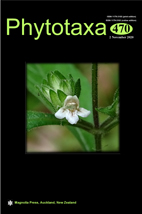Abstract
This study comprises the survey and taxonomic treatment of the Lentibulariaceae species occurring in the Atlantic Forest phytogeographic domain of Northeastern Brazil, including the states of Alagoas, Bahia, Ceará, Paraíba, Pernambuco, Rio Grande do Norte and Sergipe. Thirty-one species from the two genera Genlisea (3 species) and Utricularia (28 species) were confirmed, and 13 species were found to be wrongly reported for the study area. Four out of these 31 are new records to Sergipe, one to Bahia, one to Rio Grande do Norte, and one to Paraíba and Rio Grande do Norte; the latter one is also a new record for the Atlantic Forest. Only one species is endemic to the Atlantic Forest (Genlisea lobata) and only one to Northeastern Brazil (Utricularia flaccida), while 18 are widely distributed in the country, occurring in more than two phytogeographic domains. Other species present disjunct distributions that corroborate the already documented Atlantic-Amazonian and Atlantic-Cerrado connections. Here, an identification key, illustrations, photographs, distribution maps, besides taxonomic and phenological comments, are also presented. Moreover, an updated preliminary assessment of their conservation status at global scale, using IUCN Red List criteria, combined with a habitat preference categorization, is given as well.

